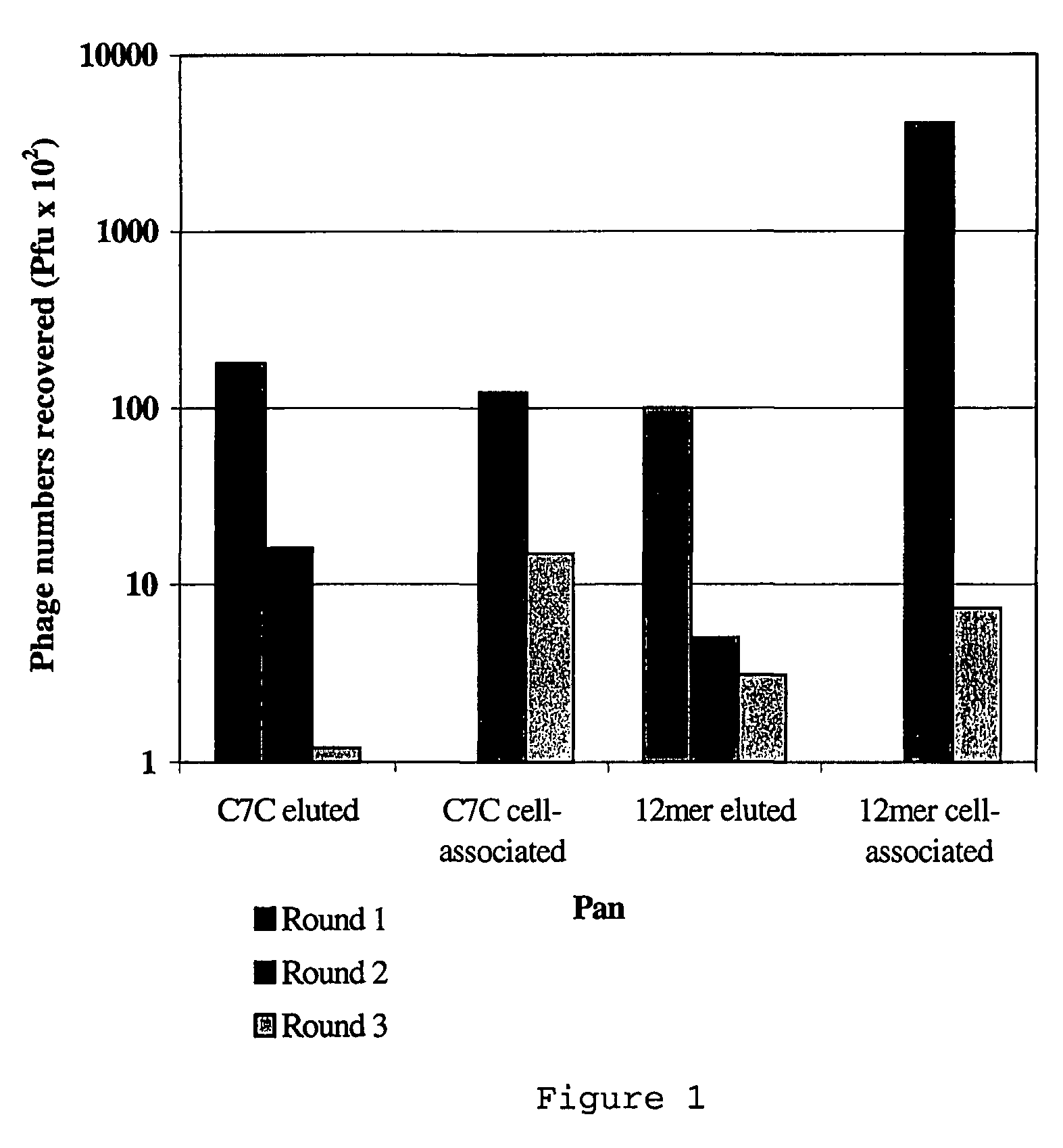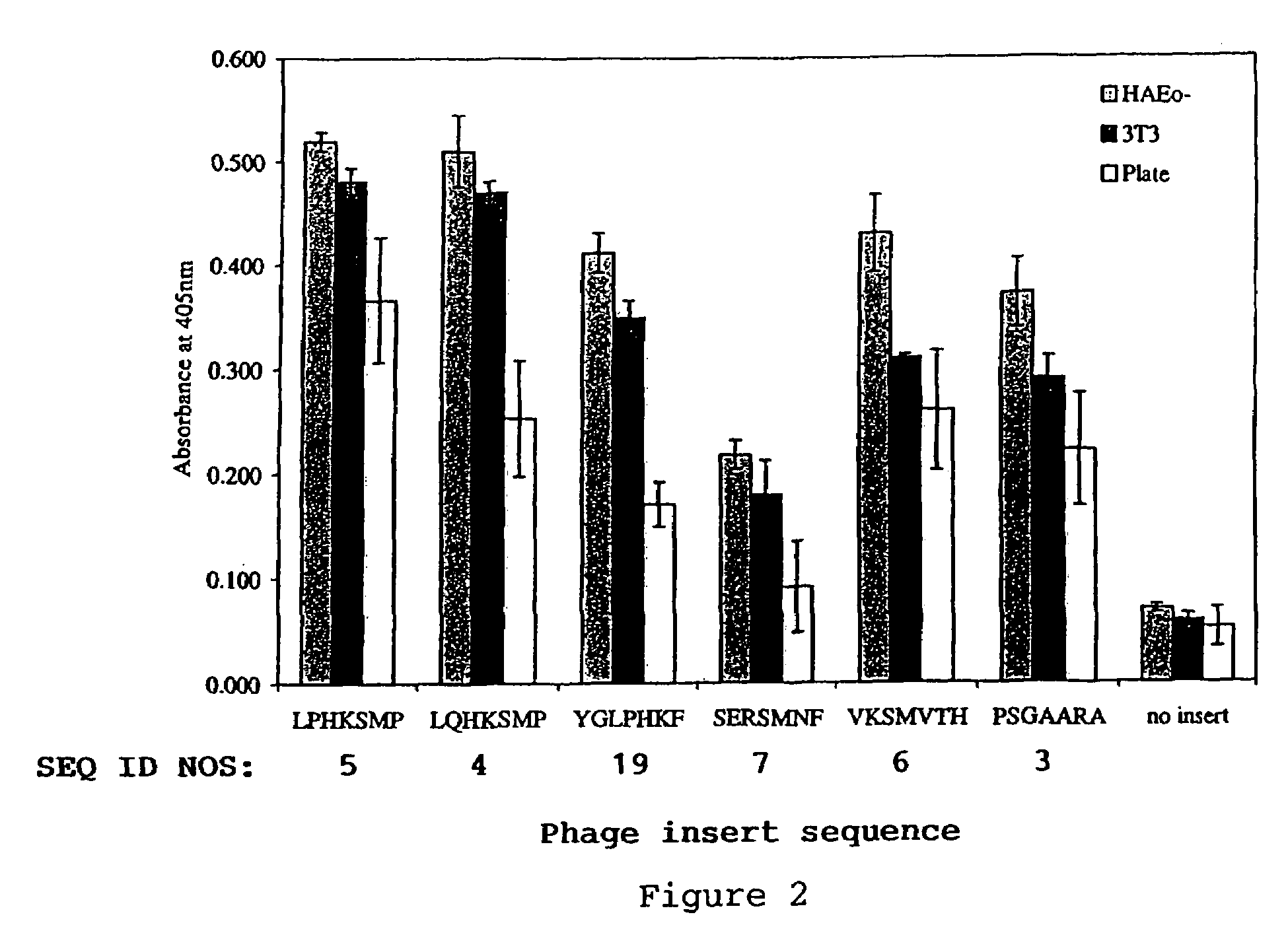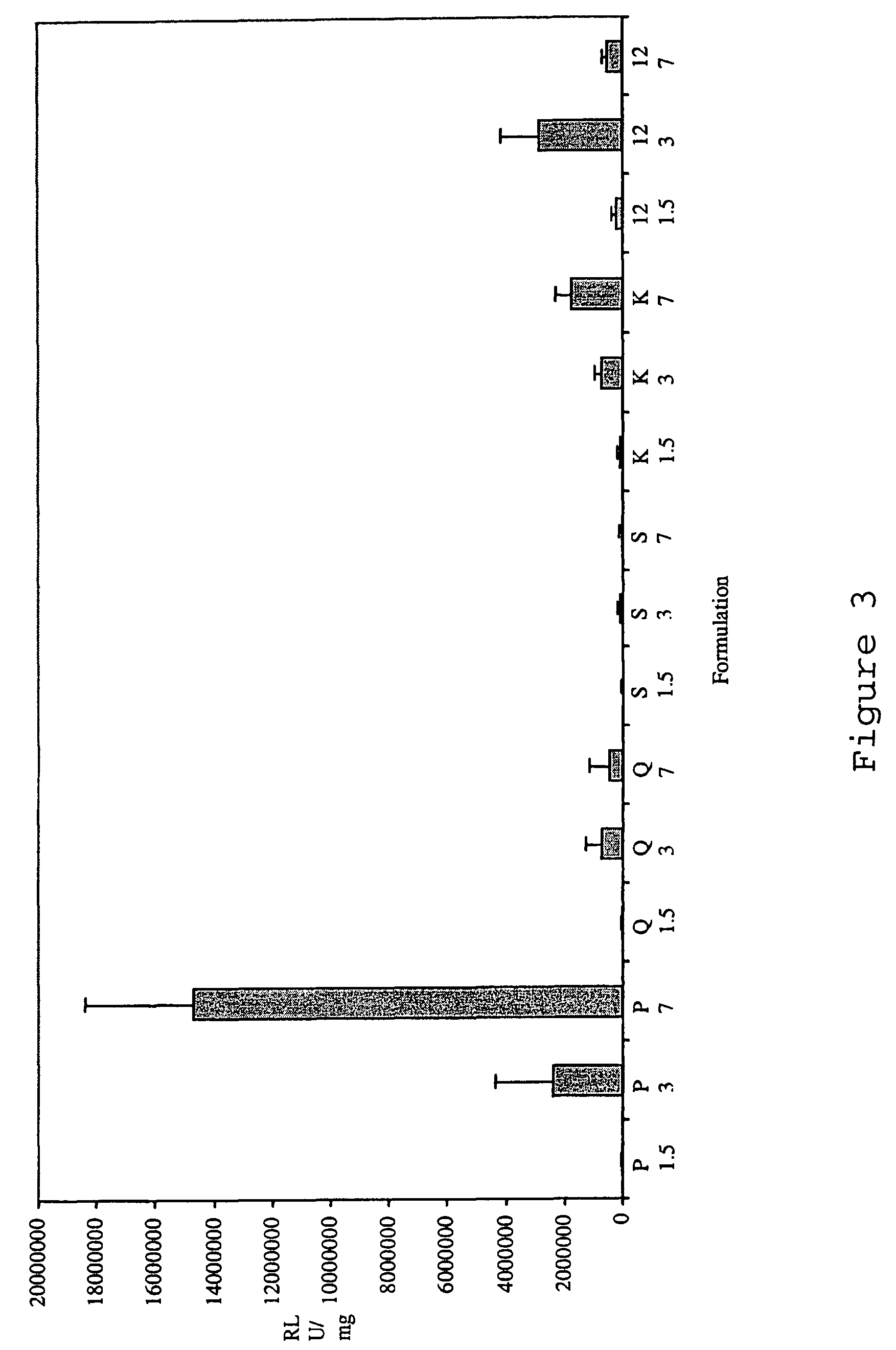Transfection complexes
a technology of transfection complexes and complexes, applied in the field of transfection, can solve the problems of insufficient dna transfer to specific target cells, poor transfection efficiency, etc., and achieve the effect of improving cell targeting properties
- Summary
- Abstract
- Description
- Claims
- Application Information
AI Technical Summary
Benefits of technology
Problems solved by technology
Method used
Image
Examples
example 1
[0160]The peptide library used in this study, C7C, was obtained from New England Biolabs Inc. Phage growth, titration and amplification procedures were performed as described in the manufacturer's handbook. The library consisted of random peptide sequences seven residues in length and flanked by cystine residues to allow cyclisation by oxidation in air. The library is likely to contain at least 1×109 different amino acid sequences.
Selection of Phage from the Library
[0161]HAE cells were grown to confluence in 24-well plates. The HAE cells used were 1HAEo− cells obtained as a gift from Dr. Dieter Gruenert of the University of California, San Francisco (now of the University of Vermont). Cells were washed twice in Tris-buffered saline, pH 7.4 (TBS) before blocking cells with 2 ml 2% Marvel, 5% bovine serum albumin (BSA)-TBS per well for 30 minutes at 4° C. The blocker was removed and 2×1011 phage were added in 1 ml of 2% Marvel, 5% BAS-TBS. The phage were allowed to bind...
example 2
[0175]Example 2 is a similar series of experiment to Example 1, with relatively minor changes in a number of conditions.
Cell Lines
[0176]The human airway epithelial cell line (HAEo−) was maintained in Eagle's minimal essential medium (MEM) HEPES modification (Sigma, Poole) containing 10% foetal calf serum (FCS), penicillin and streptomycin, and L-glutamine. The mouse fibroblast cell line 3T3 and the human neuroblastoma cell line IMR32 were grown in Dulbecco's MEM with Glutamax-1, without sodium pyruvate, with 4500 mg / L glucose, with pyridoxine (Gibco BRL) with 10% FCS, penicillin and streptomycin added. Neuro-2A cells were maintained in Dulbecco's MEM with Glutamax-1 (Gibco BRL) with 10% FCS, sodium pyruvate, penicillin and streptomycin and non-essential amino acids.
Panning Cells in Monolayer
[0177]HAEo− cells were grown to confluence in 24 well plates. Cells were washed twice in TBS before blocking cells with 2 mls 2% Marvel, 5% BSA-TBS per well for 30 mins at 4° C. The blocker was r...
example 3
[0189]The transfection experiments described above were repeated using Neuro-2A cells, IMR32 cells, rabbit adventitial fibroblast cells and 3T3 cells. For analysis of transfections of those cell lines, cells were plated to subconfluence overnight before transfecting in the same manner as above, analysing reporter gene expression after 24 hours. The results are shown in FIGS. 5 to 8.
[0190]Transfection of Neuro-2A cells with phage-derived peptides was carried out with a range of peptide:DNA charge ratios including 1.5:1, 3:1 and 7:1. The ratio giving the highest transfection efficiency (determined as RLU / mg) for each peptide is shown in FIG. 5. Controls included cells with no transfection complexes added (OptiMEM only) peptide 6, an integrin binding peptide, and peptide S, the scrambled version of peptide Y. Each result is the mean of 6 values and error bars represent the standard deviation about the mean.
[0191]Transfection of IMR32 cells with phage-derived peptides was carried out wi...
PUM
| Property | Measurement | Unit |
|---|---|---|
| diameter | aaaaa | aaaaa |
| pH | aaaaa | aaaaa |
| pH | aaaaa | aaaaa |
Abstract
Description
Claims
Application Information
 Login to View More
Login to View More - R&D
- Intellectual Property
- Life Sciences
- Materials
- Tech Scout
- Unparalleled Data Quality
- Higher Quality Content
- 60% Fewer Hallucinations
Browse by: Latest US Patents, China's latest patents, Technical Efficacy Thesaurus, Application Domain, Technology Topic, Popular Technical Reports.
© 2025 PatSnap. All rights reserved.Legal|Privacy policy|Modern Slavery Act Transparency Statement|Sitemap|About US| Contact US: help@patsnap.com



